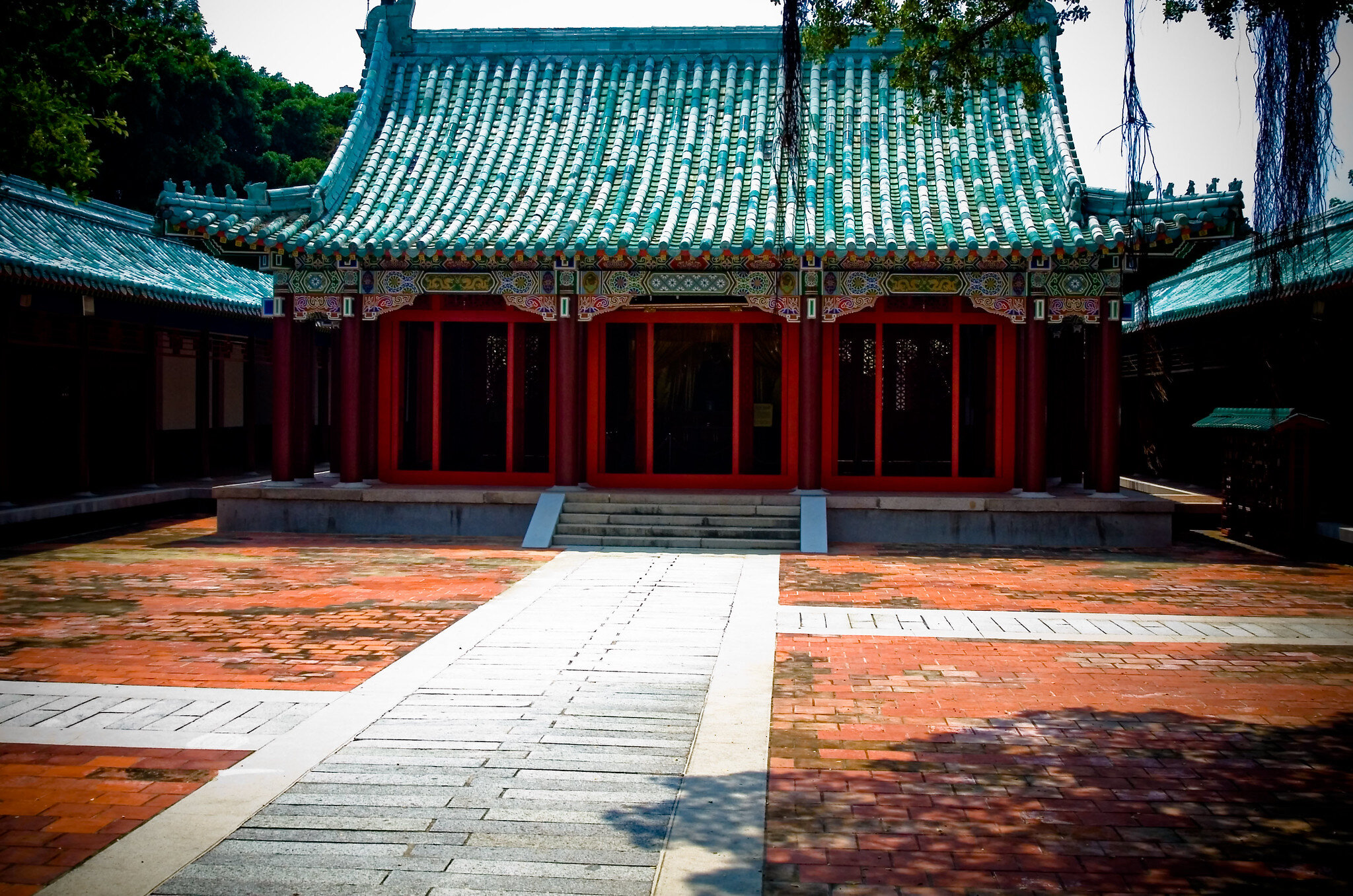Kaizan Jingu
Emergence of Contestation: 1896
Kaizan Jinja was established by renaming a seventeenth century site dedicated to the veneration of Koxinga, the Japan-born Ming loyalist and merchant-pirate who drove the Dutch from Taiwan and established his own short-lived kingdom. By request of the new Japanese governor of Tainan, the Taiwan Governor-General swiftly recognised the site as an official Shinto shrine, but retaining the southern Chinese-style buildings. In the late 1930s, a new Japanese-style shrine was built at the site, but the old building was preserved within the shrine garden. The ROC government tore down both the Japanese shrine and the old Chinese building. In its place, a new shrine now part of the Koxinga Museum, was built in a northern Chinese-style of architecture. The koma inu statues and stone torii gate were kept, although the gate's top bar was knocked off and the symbol of the ROC was added to it.
Desecration or Veneration: The Legacy of Shinto Shrines at the Borders of Imperial Japan - Karli Shimizu

